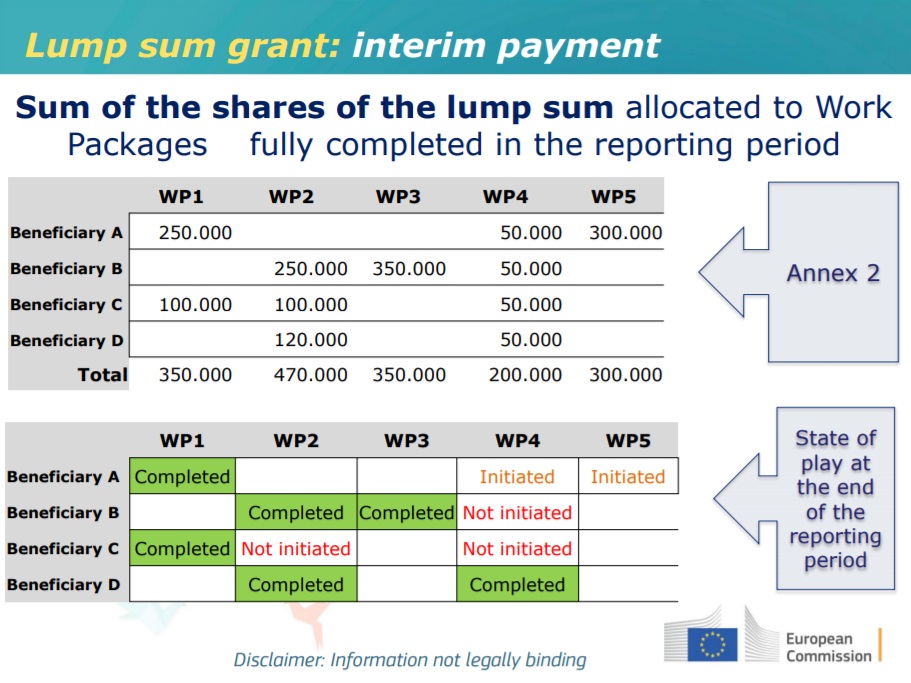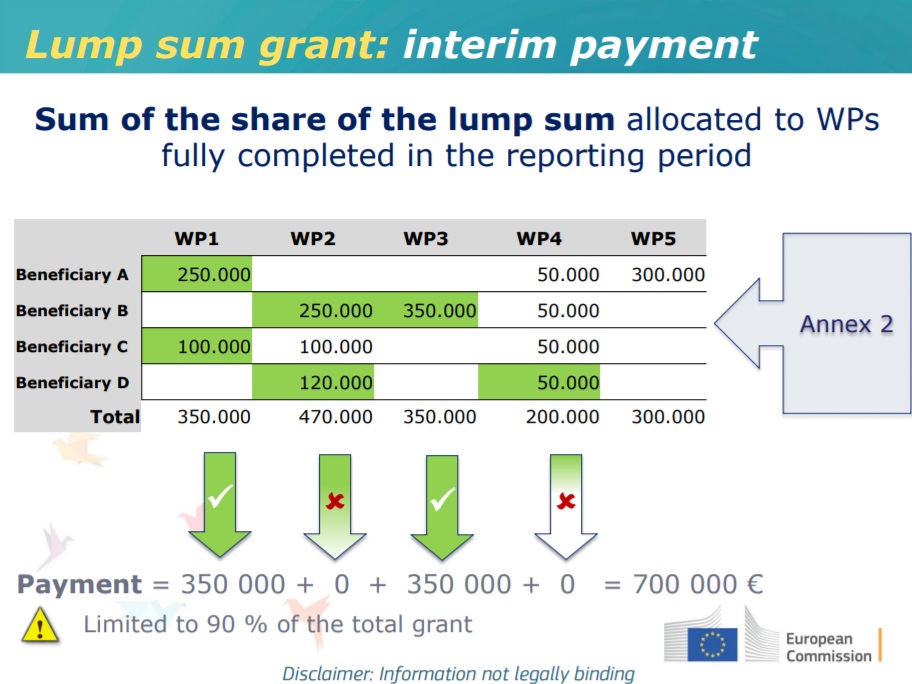What does 'lump sum' mean?
The costs of beneficiaries participating in the pilot projects are no longer reimbursed based on cost reporting, but instead by means of a previously fixed lump sum payment.
The EU Commission provides for two options: either the EU Commission specifies the lump sum in the work programme and the consortia describe the activities they will carry out for this amount in their proposals (= option I), or alternatively the applicants themselves define the lump sum in their proposals and subsequently include them in the Grant Agreement (GA) (= option II).
How does the "Lump Sum Pilot" differ from conventional Horizon 2020 Research and Innovation Actions?
The payment of a lump sum reduces the administrative burden, since it eliminates the need for accounting, cost reporting and financial audits. The focus shifts instead to the scientific-technical implementation of the project since payment is based on the contractual performance of specified work packages.
Annex 2 of the GA fixes the share of the lump sum per work package and per beneficiary. This indicates also the maximum amount of liability of each beneficiary after the balance payment.
The payment of these fixed shares of the lump sum depends on the completion of the respective work package (i.e. only partial implementation of work is generally not sufficient for payment).


What has to be considered especially during the proposal phase?
The proposal template is extensively identical with the one for standard projects in Horizon 2020. Only Option II (see above) additionally requires an “Excel Workbook” with detailed cost estimate that needs to be filled out.
Serious focus should be placed on the structure of the single work packages, as they play a major role for the payment of the shares of the lump sum. However, the number of the work packages should be reasonable and comprehensible.
What rules apply to "Lump Sum projects"?
The specific rules for the "Lump Sum Funding Pilot" can be found in the designated Lump Sum Model Grant Agreement.
What topics are eligible for "Lump Sum funding"?
The EU Commission has issued calls for proposals for specific topics eligible for lump sum funding. Our thematic NCPs may provide more information.
Detailed information can be found in …
- the EU Commission online training video
- the EU Commission factsheet "Lump Sum Pilot"
- the EU Commissions' Frequently Asked Questions
- the EU Commission presentations „LUMP SUM PILOT Why?“ as well as "Lump sum pilots: What do I have to know?"
- the presentations of the NCP Academy on „Lump-Sum in Horizon 2020 and the future of Lump Sum Pilot in Horizon Europe“
- the recording of our Webinar "Lump Sum geförderte Projekte in Horizon 2020 - Antrag und Implementierung" (in German only)
Questions & Answers
Question: Are there differences in terms of project evaluation?
Answer: No, the evaluation (criteria) for projects in the lump sum funding pilot scheme is (are) identical.
Question: Will lump sums be paid on a pro-rata basis if work packages have not been fully completed?
Answer: According to articles 21.3 and 21.4 of the specific Lump Sum-Model Grant Agreement, payments by the EU Commission will only be initiated if a work package has been fully completed. Pages 827-828 of the Annotated Model Grant Agreement (AGA) explicitly state that work packages which have only been partially completed will not be accepted. Note: At the moment of the balance payment, the EU Commission may decide on an individual basis, to grant partial payment even if work packages have not been fully completed.
Question: Are budget transfers possible during the project implementation?
Answer: Yes, but they always require an amendment and additionally two further conditions: 1. The budget transfer must not be related to work packages already completed (and declared). 2. A “project review" has to confirm that it does not call into question the decision awarding the grant or breach the principle of equal treatment.
Question: Are there any checks and/or controls by the EU Commission?
Answer: Yes, but no financial audits. There still might be checks and controls related to the proper implementation of the project and concordance with other duties of the GA (e.g. IPR, third parties).
Question: Which type of supporting documents are needed?
Answer: Documents related to the technical project implementation, to publications/prototypes/deliverables, to the implementation of work by the beneficiaries (Who did what?) as well as any other documents proving that the work was done as detailed in Annex 1 of the GA.
Contact



